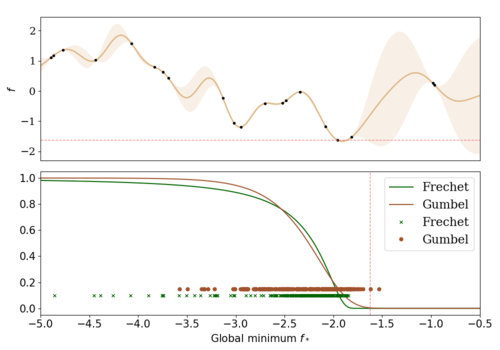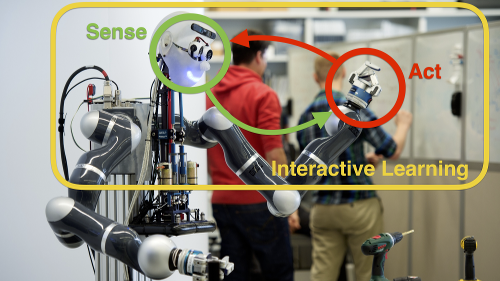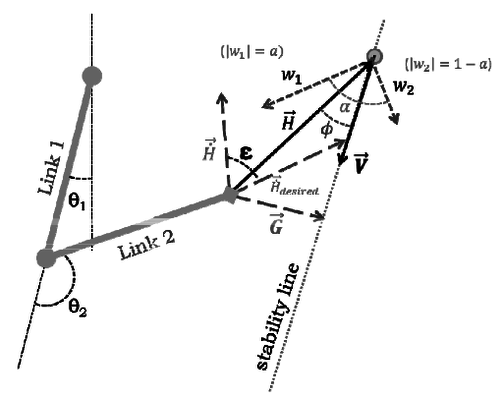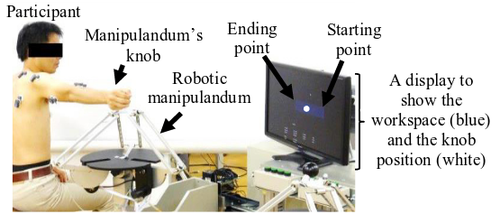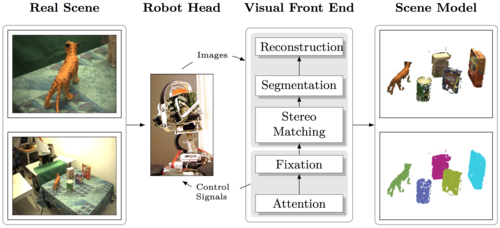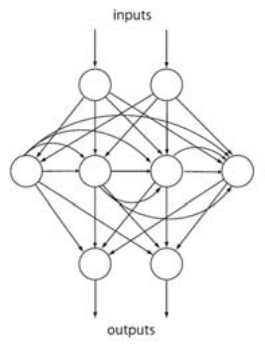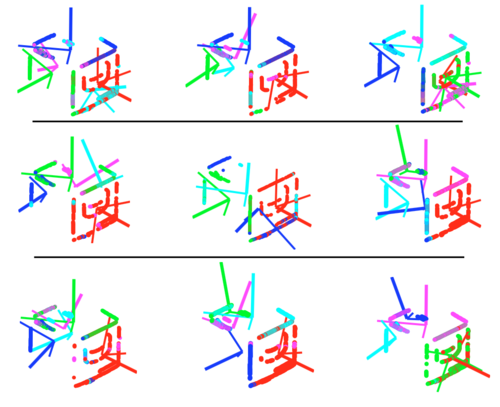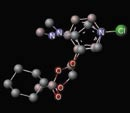2020
Marco, A., Rohr, A. V., Baumann, D., Hernández-Lobato, J. M., Trimpe, S.
Excursion Search for Constrained Bayesian Optimization under a Limited Budget of Failures
2020 (proceedings) In revision
2017
Peters, J., Lee, D., Kober, J., Nguyen-Tuong, D., Bagnell, J., Schaal, S.
Robot Learning
In Springer Handbook of Robotics, pages: 357-394, 15, 2nd, (Editors: Siciliano, Bruno and Khatib, Oussama), Springer International Publishing, 2017 (inbook)
2016
Dominey, P. F., Prescott, T. J., Bohg, J., Engel, A. K., Gallagher, S., Heed, T., Hoffmann, M., Knoblich, G., Prinz, W., Schwartz, A.
Implications of Action-Oriented Paradigm Shifts in Cognitive Science
In The Pragmatic Turn - Toward Action-Oriented Views in Cognitive Science, 18, pages: 333-356, 20, Strüngmann Forum Reports, vol. 18, J. Lupp, series editor, (Editors: Andreas K. Engel and Karl J. Friston and Danica Kragic), The MIT Press, 18th Ernst Strüngmann Forum, May 2016 (incollection) In press
Bohg, J., Kragic, D.
Learning Action-Perception Cycles in Robotics: A Question of Representations and Embodiment
In The Pragmatic Turn - Toward Action-Oriented Views in Cognitive Science, 18, pages: 309-320, 18, Strüngmann Forum Reports, vol. 18, J. Lupp, series editor, (Editors: Andreas K. Engel and Karl J. Friston and Danica Kragic), The MIT Press, 18th Ernst Strüngmann Forum, May 2016 (incollection) In press
Oh, Y., Sutanto, G., Mistry, M., Schweighofer, N., Schaal, S.
Distinct adaptation to abrupt and gradual torque perturbations with a multi-joint exoskeleton robot
Abstracts of Neural Control of Movement Conference (NCM 2016), Montego Bay, Jamaica, April 2016 (poster)
Ting, J., Meier, F., Vijayakumar, S., Schaal, S.
Locally Weighted Regression for Control
In Encyclopedia of Machine Learning and Data Mining, pages: 1-14, Springer US, Boston, MA, 2016 (inbook)
2015
Trimpe, S.
Lernende Roboter
In Jahrbuch der Max-Planck-Gesellschaft, Max Planck Society, May 2015, (popular science article in German) (inbook)
Schaal, S.
Autonomous Robots
In Jahrbuch der Max-Planck-Gesellschaft, May 2015 (incollection)
Berenz, V., Alnajjar, F., Hayashibe, M., Shimoda, S.
Tacit Learning for Emergence of Task-Related Behaviour through Signal Accumulation
In Emergent Trends in Robotics and Intelligent Systems: Where is the Role of Intelligent Technologies in the Next Generation of Robots?, pages: 31-38, Springer International Publishing, Cham, 2015 (inbook)
Peters, J., Lee, D., Kober, J., Nguyen-Tuong, D., Bagnell, J. A., Schaal, S.
Robot Learning
In Springer Handbook of Robotics 2nd Edition, pages: 1371-1394, Springer Berlin Heidelberg, Berlin, Heidelberg, 2015 (incollection)
2014
Kalakrishnan, M.
Learning objective functions for autonomous motion generation
University of Southern California, University of Southern California, Los Angeles, CA, 2014 (phdthesis)
Alnajjar, F. S., Berenz, V., Ken-ichi, O., Ohno, K., Yamada, H., Kondo, I., Shimoda, S.
Muscle Synergy Features in Behavior Adaptation and Recovery
In Replace, Repair, Restore, Relieve – Bridging Clinical and Engineering Solutions in Neurorehabilitation: Proceedings of the 2nd International Conference on NeuroRehabilitation (ICNR2014), Aalborg, 24-26 June, 2014, pages: 245-253, Springer International Publishing, Cham, 2014 (inbook)
Pastor, P.
Data-driven autonomous manipulation
University of Southern California, University of Southern California, Los Angeles, CA, 2014 (phdthesis)
2013
Trimpe, S.
Distributed and Event-based State Estimation and Control
ETH Zurich, 2013 (phdthesis)
Righetti, L., Buchli, J., Mistry, M., Kalakrishnan, M., Schaal, S.
Using Torque Redundancy to Optimize Contact Forces in Legged Robots
In Redundancy in Robot Manipulators and Multi-Robot Systems, 57, pages: 35-51, Lecture Notes in Electrical Engineering, Springer Berlin Heidelberg, 2013 (incollection)
2012
2011
Bohg, J.
Multi-Modal Scene Understanding for Robotic Grasping
(2011:17):vi, 194, Trita-CSC-A, KTH Royal Institute of Technology, KTH, Computer Vision and Active Perception, CVAP, Centre for Autonomous Systems, CAS, KTH, Centre for Autonomous Systems, CAS, December 2011 (phdthesis)
Theodorou, E. A.
Iterative path integral stochastic optimal control: Theory and applications to motor control
University of Southern California, University of Southern California, Los Angeles, CA, 2011 (phdthesis)
2010
Ting, J., Vijayakumar, S., Schaal, S.
Locally weighted regression for control
In Encyclopedia of Machine Learning, pages: 613-624, (Editors: Sammut, C.;Webb, G. I.), Springer, 2010, clmc (inbook)
2009
Berenz, V., Suzuki, K.
Synchronized Oriented Mutations Algorithm for Training Neural Controllers
In Advances in Neuro-Information Processing: 15th International Conference, ICONIP 2008, Auckland, New Zealand, November 25-28, 2008, Revised Selected Papers, Part II, pages: 244-251, Springer Berlin Heidelberg, Berlin, Heidelberg, 2009 (inbook)
Bergström, N., Bohg, J., Kragic, D.
Integration of Visual Cues for Robotic Grasping
In Computer Vision Systems, 5815, pages: 245-254, Lecture Notes in Computer Science, Springer Berlin Heidelberg, 2009 (incollection)
Ting, J.
Bayesian Methods for Autonomous Learning Systems (Phd Thesis)
Department of Computer Science, University of Southern California, Los Angeles, CA, 2009, clmc (phdthesis)
2008
Eich, M., Grimminger, F., Kirchner, F.
Adaptive stair-climbing behaviour with a hybrid legged-wheeled robot
In Advances In Mobile Robotics, pages: 768-775, World Scientific, August 2008 (incollection)
2007
Peters, J.
Machine Learning of Motor Skills for Robotics
University of Southern California, Los Angeles, CA, USA, University of Southern California, Los Angeles, CA, USA, 2007, clmc (phdthesis)
Schaal, S, Mohajerian, P., Ijspeert, A.
Dynamics systems vs. optimal control ? a unifying view
In Progress in Brain Research, (165):425-445, 2007, clmc (inbook)
2006
Berenz, V., Tillier, F., Barbosa, F., Boryeu, M., Horvath, D., Froloff, N.
Molecular Modeling for the BioPrint Pharmaco-informatics Platform
2006 (poster)
Vijayakumar, S., DSouza, A., Schaal, S.
Approximate nearest neighbor regression in very high dimensions
In Nearest-Neighbor Methods in Learning and Vision, pages: 103-142, (Editors: Shakhnarovich, G.;Darrell, T.;Indyk, P.), Cambridge, MA: MIT Press, 2006, clmc (inbook)
2004
D’Souza, A
Towards Tractable Parameter-Free Statistical Learning (Phd Thesis)
Department of Computer Science, University of Southern California, Los Angeles, 2004, clmc (phdthesis)
Schaal, S., Ijspeert, A., Billard, A.
Computational approaches to motor learning by imitation
In The Neuroscience of Social Interaction, (1431):199-218, (Editors: Frith, C. D.;Wolpert, D.), Oxford University Press, Oxford, 2004, clmc (inbook)
2002
Schaal, S.
Learning robot control
In The handbook of brain theory and neural networks, 2nd Edition, pages: 983-987, 2, (Editors: Arbib, M. A.), MIT Press, Cambridge, MA, 2002, clmc (inbook)
Schaal, S.
Arm and hand movement control
In The handbook of brain theory and neural networks, 2nd Edition, pages: 110-113, 2, (Editors: Arbib, M. A.), MIT Press, Cambridge, MA, 2002, clmc (inbook)
2000
Shibata, T., Schaal, S.
Biomimetic gaze stabilization
In Robot learning: an Interdisciplinary approach, pages: 31-52, (Editors: Demiris, J.;Birk, A.), World Scientific, 2000, clmc (inbook)
1999
Schaal, S.
Nonparametric regression for learning nonlinear transformations
In Prerational Intelligence in Strategies, High-Level Processes and Collective Behavior, 2, pages: 595-621, (Editors: Ritter, H.;Cruse, H.;Dean, J.), Kluwer Academic Publishers, 1999, clmc (inbook)
1996
Schaal, S., Atkeson, C. G.
From isolation to cooperation: An alternative of a system of experts
In Advances in Neural Information Processing Systems 8, pages: 605-611, (Editors: Touretzky, D. S.;Mozer, M. C.;Hasselmo, M. E.), MIT Press, Cambridge, MA, 1996, clmc (inbook)
1995
Sternad, D., Schaal, S., Atkeson, C. G.
Batting a ball: Dynamics of a rhythmic skill
In Studies in Perception and Action, pages: 119-122, (Editors: Bardy, B.;Bostma, R.;Guiard, Y.), Erlbaum, Hillsdayle, NJ, 1995, clmc (inbook)
1993
Schaal, S., Sternad, D.
Learning passive motor control strategies with genetic algorithms
In 1992 Lectures in complex systems, pages: 913-918, (Editors: Nadel, L.;Stein, D.), Addison-Wesley, Redwood City, CA, 1993, clmc (inbook)
Sternad, D., Schaal, S.
A genetic algorithm for evolution from an ecological perspective
In 1992 Lectures in Complex Systems, pages: 223-231, (Editors: Nadel, L.;Stein, D.), Addison-Wesley, Redwood City, CA, 1993, clmc (inbook)
1992
Schaal, S.
Informationssysteme mit CAD (Information systems within CAD)
In CAD/CAM Grundlagen, pages: 199-204, (Editors: Milberg, J.), Springer, Buchreihe CIM-TT. Berlin, 1992, clmc (inbook)
1991
Ehrlenspiel, K., Schaal, S.
Ways to smarter CAD-systems
In Proceedings of ICED’91Heurista, pages: 10-16, (Editors: Hubka), Edition, Schriftenreihe WDK 21. Zürich, 1991, clmc (inbook)

